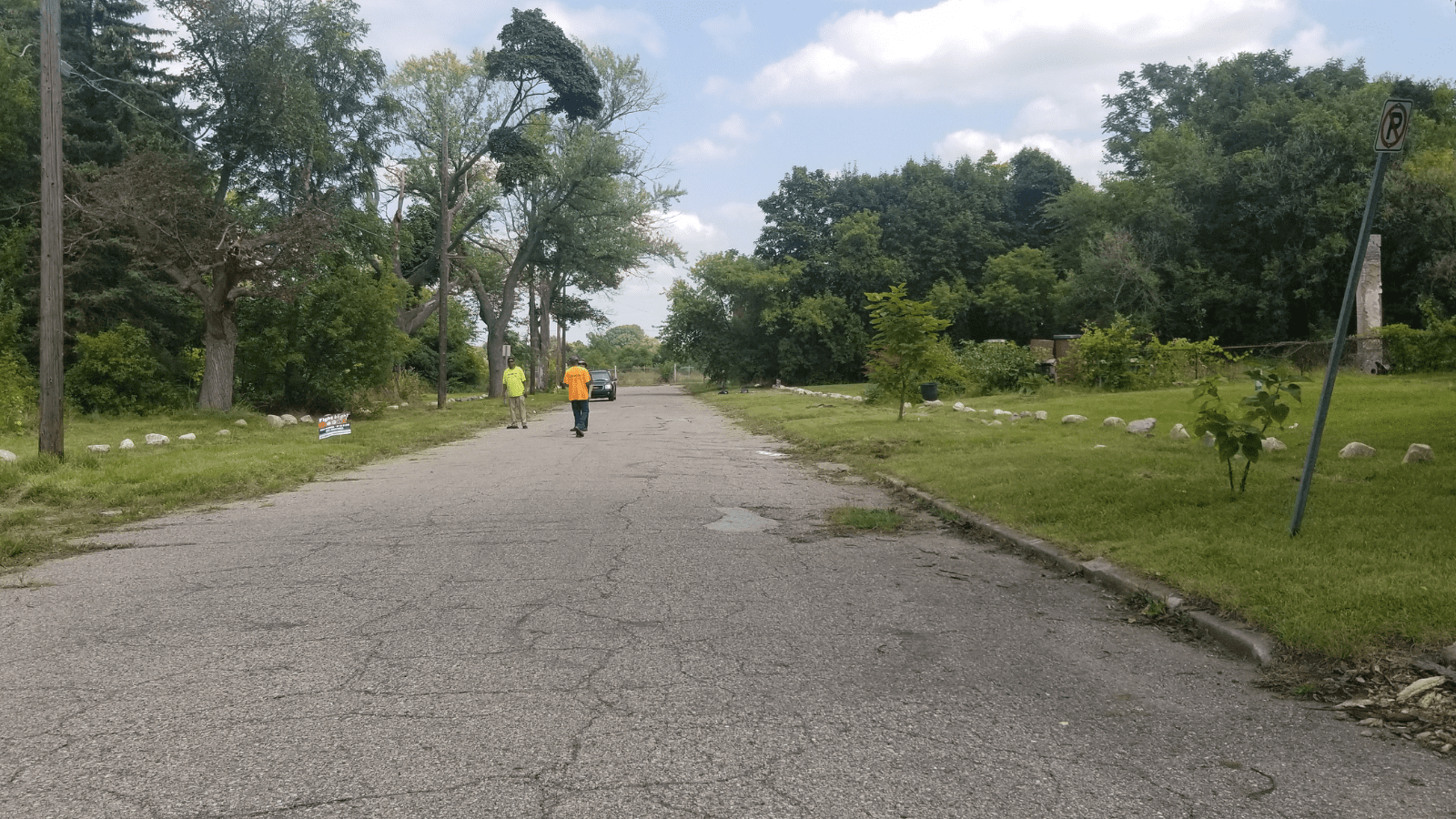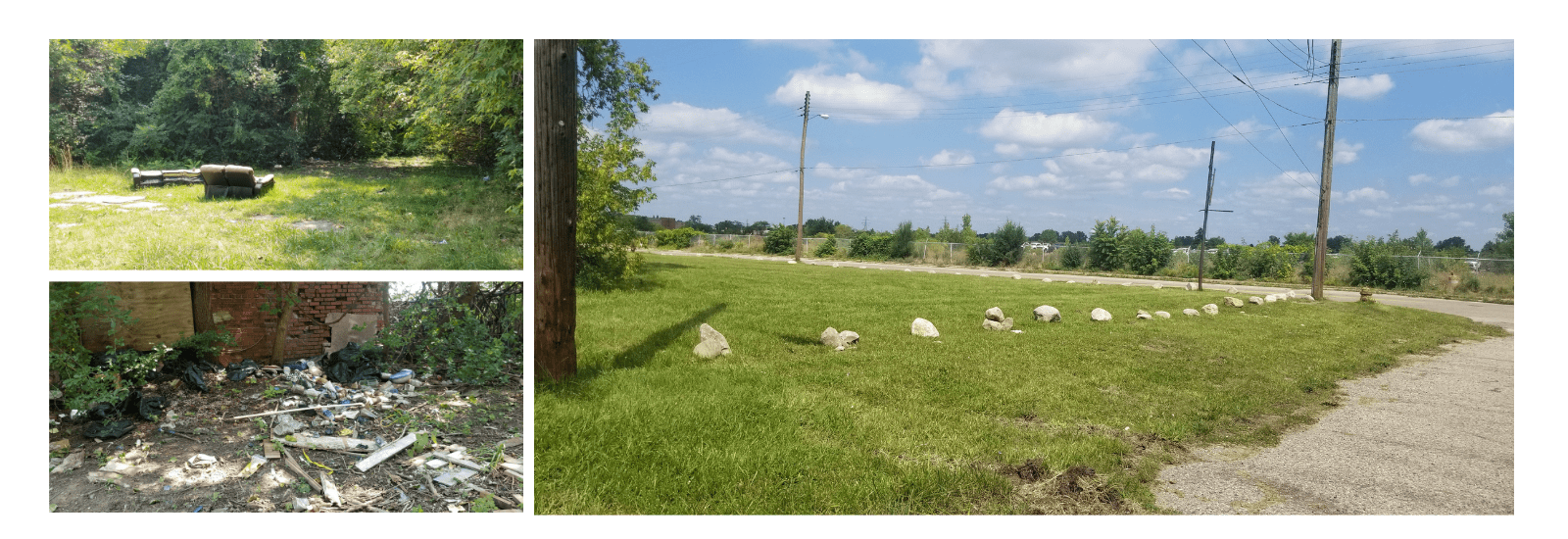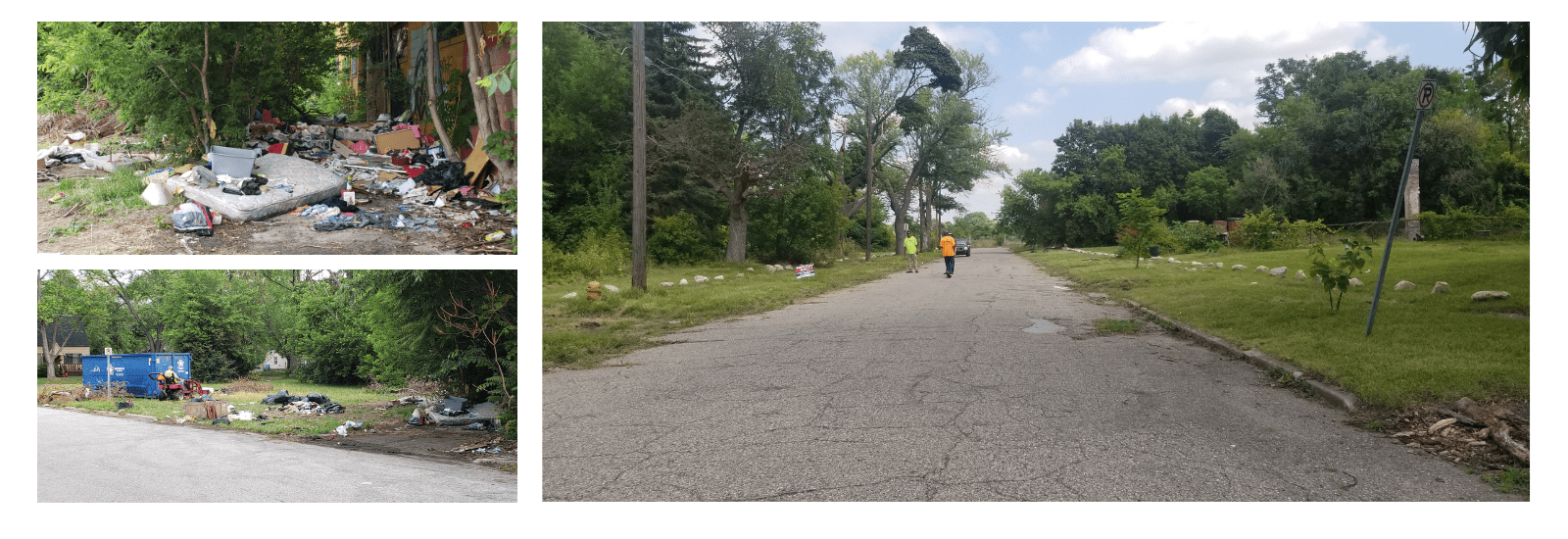Community-based greening programs can curb violence, improve mental and physical health

By Kate Barnes, Communications Manager
_______
In an effort to address community violence throughout the state and nationwide, University of Michigan researchers are partnering with community members and local organizations to implement and evaluate programs that aim to curb violence by cleaning up neighborhoods.
One of these partnerships is the Genesee County Land Bank’s Clean & Green program. Through Clean & Green, the Flint-based land bank, “supports innovative community groups and organizations in the cleaning, maintaining, and beautifying of otherwise vacant properties in Genesee County”.
In collaboration with the land bank, community organizations manage concentrated clusters of vacant lots seasonally by cleaning and maintaining the properties. Each group is provided a stipend and works to employ youth in the community.
Groups are also encouraged to develop innovative ways to utilize or repurpose the vacant spaces. More than 65 community-based organizations had participated in Clean & Green by 2023, engaging more than 500 residents (including nearly 300 youth) in improving local neighborhoods.
To determine the effectiveness and long-term impact of the program, the land bank has been working with researchers at the Prevention Research Center of Michigan (PRC-MI) and U-M’s Institute for Firearm Injury Prevention to evaluate outcomes. The study, led by Marc Zimmerman, principal investigator of the PRC-MI and co-director of the institute, has shown significant improvements in overall crime reduction.
According to study findings released in 2018, the efforts in Genesee County made a significant impact. Street segments with vacant lots maintained through the Clean & Green program had nearly 40% fewer assaults and violent crimes than street segments with vacant, abandoned lots.
Christina Kelly, the land bank’s director of planning and neighborhood revitalization, said the partnership with U-M has played a vital role in addressing community blight in local communities.
“By collaborating with U-M researchers and their teams, we have been able to secure additional resources and identify the many benefits of greening and blight elimination throughout Genesee County,” Kelly said. “We have been able to see the success of these efforts not only through increased community engagement but also in the data. These programs do work and can make a difference.”

U-M researcher Marc Zimmerman led the study.
Zimmerman, the Marshall H. Becker Collegiate Professor of Public Health, has been studying the outcomes of vacant lot greening and other greening projects on community violence for decades. He is a professor of health behavior and health equity in the School of Public Health and professor of psychology in LSA.
“By partnering with local groups to transform vacant or overgrown spaces into vibrant spots for activity and gatherings, we are able to see a reclamation of community health and well being by reducing violence and taking advantage of local strengths,” Zimmerman said. “As an academic community, we have an immense responsibility to utilize research to improve lives, and the data from projects such as this one in Flint clearly shows community greening efforts help reduce violence.”
In 2024, the PRC-MI received $5 million in renewed funding from the Centers for Disease Control and Prevention to continue community-based participatory research projects, including Clean & Green, through at least 2029. The center, one of twenty CDC-funded Prevention Research Centers nationwide, is housed at the University of Michigan and “promotes safe and healthy futures through prevention research, training, and outreach.”
Along with his work at the PRC-MI, Zimmerman’s research focus at the Institute for Firearm Injury Prevention includes similar studies spanning multiple states, allowing him and his team to compare Michigan’s findings with others.
In Ohio, Zimmerman and his team partnered with the Youngstown Neighborhood Development Corporation in 2022 to evaluate the Busy Streets Theory and the greening hypothesis, which suggest that engaging community residents in cleaning up and repurposing vacant lots can reduce crime and violence.
This study, covering a three-year period, utilized data from 2,100 street segments to test the effects of community-engaged vacant lot greening.
Similar to the findings in Flint, the teams found that street segments around vacant lots cared for by community residents experienced more than twice the reduction in violent crime than those receiving professional maintenance, whereas areas receiving no care saw a slight increase in violent crime.
“Resident engagement builds trust and enhances acceptability and community buy-in, while establishing formal partnerships between residents and community organizations ensures that there is financial support for the programs,” Zimmerman said.
“By engaging community residents and allowing them to drive the interventions, we are able to see a sustainable, long-term violence prevention strategy that actually works.”

Before and after images of illegal dumping sites in Flint, Michigan, transformed through the Genesee County Lank Bank’s Clean & Green program. This initiative partners with University of Michigan researchers to study how neighborhood revitalization efforts reduce community violence.

